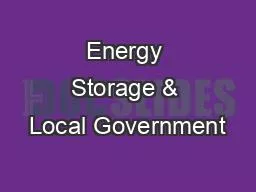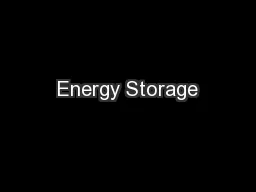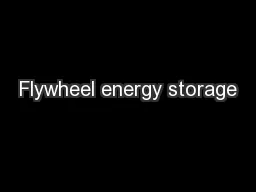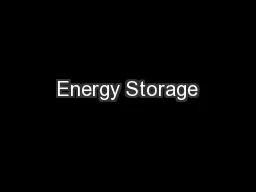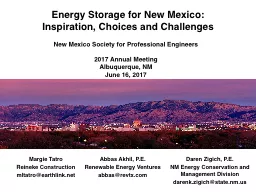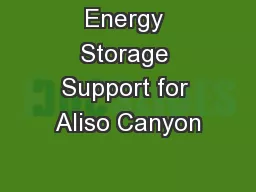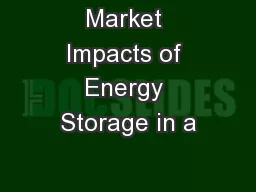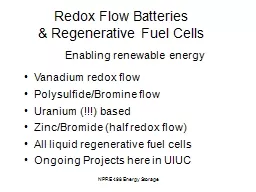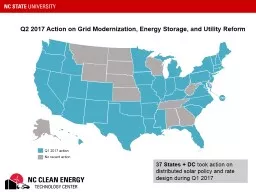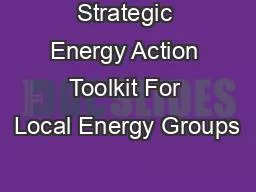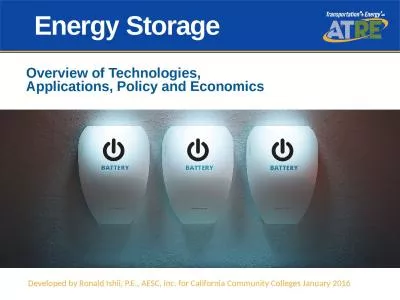PPT-Energy Storage & Local Government
Author : attentionallianz | Published Date : 2020-08-27
Regionally Integrated Climate Action Planning Suite RICAPS Working Group Meeting August 22 2017 Jin Noh Policy Manager California Energy Storage Alliance CESA 1
Presentation Embed Code
Download Presentation
Download Presentation The PPT/PDF document "Energy Storage & Local Government" is the property of its rightful owner. Permission is granted to download and print the materials on this website for personal, non-commercial use only, and to display it on your personal computer provided you do not modify the materials and that you retain all copyright notices contained in the materials. By downloading content from our website, you accept the terms of this agreement.
Energy Storage & Local Government: Transcript
Download Rules Of Document
"Energy Storage & Local Government"The content belongs to its owner. You may download and print it for personal use, without modification, and keep all copyright notices. By downloading, you agree to these terms.
Related Documents

